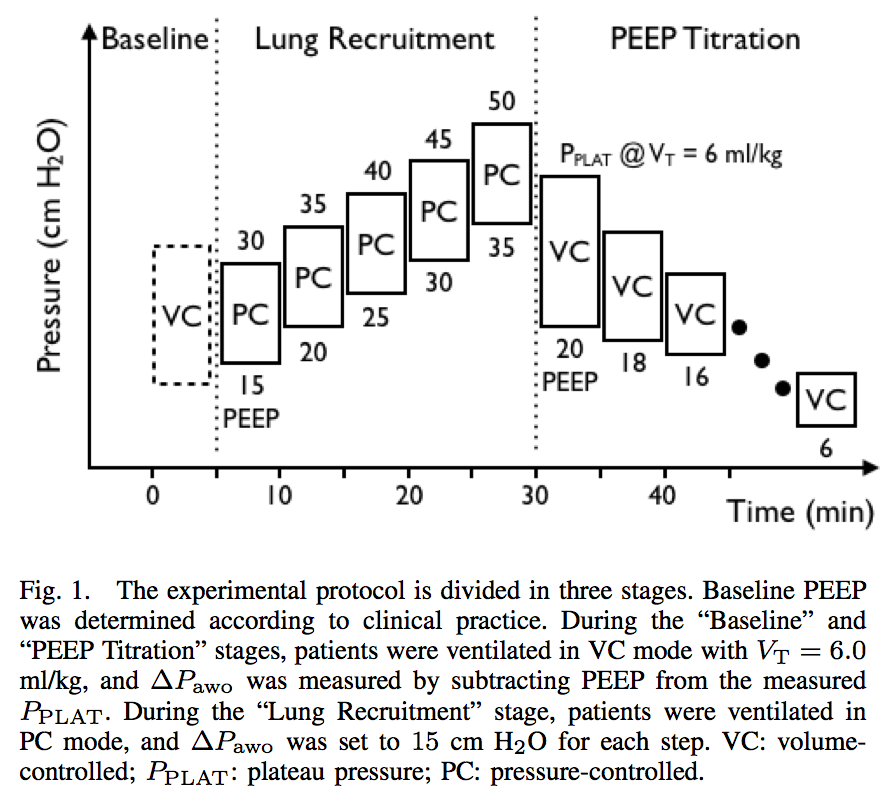Data were published in the following two papers:
- C Gómez-Laberge, JH Arnold, GK Wolf (2012) A Unified Approach for EIT Imaging of Regional Overdistension and Atelectasis in Acute Lung Injury IEEE Trans Med Imag, 31:834−842
- GK Wolf, C Gómez-Laberge, JN Kheir, D Zurakowski, BK Walsh, A Adler, JH Arnold (2012) Reversal of Dependent Lung Collapse Predicts Response to Lung Recruitment in Children with Early Acute Lung Injury Pediatr Crit Care Med, 13:509−515
- C Gómez-Laberge, JH Arnold, GK Wolf. A Unified Approach for EIT Imaging of Regional Overdistension and Atelectasis in Acute Lung Injury IEEE Trans Med Imag, In Press 2012
- GK Wolf, C Gómez-Laberge, JN Kheir, D Zurakowski, BK Walsh, A Adler, JH Arnold. Reversal of Dependent Lung Collapse Predicts Response to Lung Recruitment in Children with Early Acute Lung Injury Pediatr Crit Care Med, In Press 2012

- Patient #1:
Data (zip format)
The patient details are as follows: Gender: F, Age: 5.9 years, Weight: 20kg, Condition: Primary ARDS triggered by parainfluenza pneumonia.
File details:FILENAME cmH2O cmH2O STUDYNAME/SUBJECT_1/YYYYMMDD/Eit/Viasys/1001_b.get PEEP=14 (PPlat−PEEP) =5 STUDYNAME/SUBJECT_1/YYYYMMDD/Eit/Viasys/1001_c1.get PEEP=15 (PPlat−PEEP) =15 STUDYNAME/SUBJECT_1/YYYYMMDD/Eit/Viasys/1001_c2.get PEEP=20 (PPlat−PEEP) =15 STUDYNAME/SUBJECT_1/YYYYMMDD/Eit/Viasys/1001_c3.get PEEP=25 (PPlat−PEEP) =15 STUDYNAME/SUBJECT_1/YYYYMMDD/Eit/Viasys/1001_c4.get PEEP=30 (PPlat−PEEP) =15 STUDYNAME/SUBJECT_1/YYYYMMDD/Eit/Viasys/1001_d1.get PEEP=20 (PPlat−PEEP) =6 STUDYNAME/SUBJECT_1/YYYYMMDD/Eit/Viasys/1001_d2.get PEEP=18 (PPlat−PEEP) =6 STUDYNAME/SUBJECT_1/YYYYMMDD/Eit/Viasys/1001_d3.get PEEP=16 (PPlat−PEEP) =5 STUDYNAME/SUBJECT_1/YYYYMMDD/Eit/Viasys/1001_d4.get PEEP=14 (PPlat−PEEP) =4 - Patient #7:
Data (zip format)
The patient details are as follows: Gender: F, Age: 13.9 years, Weight: 76kg, Condition: patient on ECMO suffering from secondary ARDS due to sepsis.
File details:FILENAME cmH2O cmH2O STUDYNAME/SUBJECT_7/YYYYMMDD/Eit/Viasys/1007_b2.get PEEP=22 (PPlat−PEEP) =16 STUDYNAME/SUBJECT_7/YYYYMMDD/Eit/Viasys/1007_c1.get PEEP=15 (PPlat−PEEP) =15 STUDYNAME/SUBJECT_7/YYYYMMDD/Eit/Viasys/1007_c2.get PEEP=20 (PPlat−PEEP) =15 STUDYNAME/SUBJECT_7/YYYYMMDD/Eit/Viasys/1007_c3.get PEEP=25 (PPlat−PEEP) =15 STUDYNAME/SUBJECT_7/YYYYMMDD/Eit/Viasys/1007_c4.get PEEP=30 (PPlat−PEEP) =15 STUDYNAME/SUBJECT_7/YYYYMMDD/Eit/Viasys/1007_d1.get PEEP=20 (PPlat−PEEP) =17 STUDYNAME/SUBJECT_7/YYYYMMDD/Eit/Viasys/1007_d2.get PEEP=18 (PPlat−PEEP) =15 - Analysis software (m files in zip format)